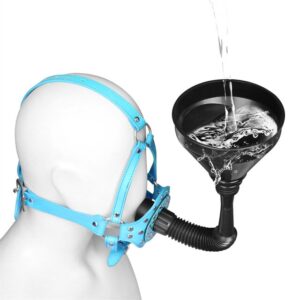hogtied
What is hogtied?
Hogtied is a popular bondage practice that involves restraining a person’s wrists and ankles together behind their back, often using rope or other materials. The restrained individual is then left in a prone position, resembling the position of a hog with its legs tied together.
This type of bondage can be used for sexual purposes or as part of BDSM play, where one partner takes on the dominant role and the other takes on the submissive role. It can also be enjoyed as a form of sensory deprivation and power exchange between partners.
Discover Hogtied

Frequently Asked Questions
In Conclusion
Hogtied can add an exciting element to sexual play while also creating feelings of trust, intimacy, and surrender between partners. It is important to prioritize safety by using proper restraints, having consent and communication, checking circulation regularly, and having a safe word in place. Whether you’re new to bondage play or looking for something new to spice up your sex life, hogtied can be a thrilling experience for all involved. Visit Incognito.black to explore different bondage products and find the perfect fit for your desires.
The Sensation of Being Hogtied
Being hogtied can elicit a range of sensations for both the dominant and submissive partners. For those who enjoy being restrained, it can bring about feelings of vulnerability, surrender, and even arousal. The act of being bound in such a way restricts movement and creates an intense focus on the body, heightening sensation.
On the other hand, those who enjoy taking on the dominant role may experience feelings of control, power, and pleasure from seeing their partner in such a vulnerable state. This exchange of power dynamics can add an exciting element to sexual play.
How to Hogtie Safely
As with any form of bondage play, it is important to prioritize safety when engaging in hogtie activities. Here are some tips to ensure you have a safe and enjoyable experience:
1) Always have consent: Consent is crucial in all types of sexual activities but especially so when it comes to bondage. Make sure all parties involved are aware and comfortable with what will happen during your hogtie session.
2) Use proper restraints: It’s important to use high-quality restraints that won’t cause injury or discomfort to your partner. Rope specifically designed for bondage purposes or leather cuffs are good options.
3) Have a safe word: A safe word is a pre-determined word or phrase that signals to your partner that you need to stop the activity immediately. This is important for both the dominant and submissive partners to ensure boundaries are respected.
4) Check for circulation: During a hogtie, it’s essential to check on your partner’s circulation regularly. If their hands or feet start turning blue or feel numb, it’s time to untie them and reposition.
The Pros and Cons of Hogtied
Is hogtied only used for sexual purposes?
No, hogtied can also be used as part of BDSM play or as a form of power exchange between partners.
Can anyone engage in hogtied?
Hogtied can be enjoyed by anyone who has consented to participate in this type of bondage play. It is important to communicate with your partner beforehand about any physical limitations or discomforts they may have.
In Conclusion
Hogtied can add an exciting element to sexual play while also creating feelings of trust, intimacy, and surrender between partners. It is important to prioritize safety by using proper restraints, having consent and communication, checking circulation regularly, and having a safe word in place. Whether you’re new to bondage play or looking for something new to spice up your sex life, hogtied can be a thrilling experience for all involved. Visit Incognito.black to explore different bondage products and find the perfect fit for your desires.
Pros:
– Can add an element of excitement and novelty to sexual play
– Can enhance trust and intimacy between partners
– Can provide a sense of surrender and vulnerability for the submissive partner
Cons:

– It can be physically uncomfortable for the restrained individual if not done properly.
– Requires communication, trust, and consent between partners.
– May not be suitable for everyone’s comfort level or physical limitations.
















